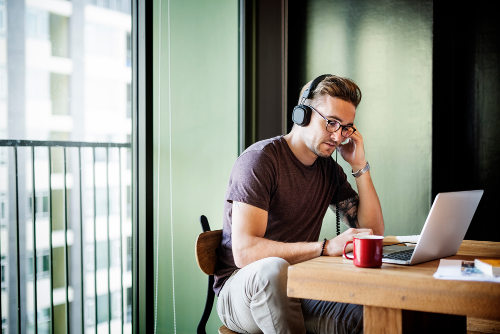The ability to work from virtually anywhere has enabled many employers to allow their employees to work remotely as lone workers. Although solo working scenarios are increasingly popular, employers have a moral and legal responsibility to ensure their employees are safe. The employer thus not only needs to have a protection system in place but also ensure lone workers understand it well and can use/access it effectively.

Outlined below are a few simple steps and tips on how to keep your remote workers protected.
1. Identify Everyone In The System
You might have heard of the phrase, ‘far from sight far from mind.’ This is especially true with dozens or even hundreds of workers under your lone worker program. Although you might be well area of most of your workers, e.g., nurses, crane operators, managers, water samplers etc., there’s a good chance you can’t recall the worker working in a remote region isolated from his/her colleagues. Some of them might be individuals staying up late in the office to complete an assignment or looking to get ahead of a project.
Knowing all your lone workers by name, or whatever project they are working on, is one of the best ways and the first step to keeping them safe.
2. Have Risk Management Measures in Place
Every job carries specific risks, a reason you want to have proper measures in place to protect your workers from the same. According to experts, it’s better to anticipate threats and hazards that come with the job than to wait until the worst happens. After identifying the risks, put up measures to help minimize or even prevent most of these risks, and have well laid out steps that all workers must know by heart.
As long as workers know what to do, they will be better placed to effectively avoid and mitigate worst-case scenarios.
3. Add Features to Support Lone Workers
While having all manner of security features for remote workers is good, you still don’t want to overburden them with complex admin processes. Instead, consider adding features that will make their work easier while keeping them safe. Some of the features you might want to add include:
- Ability to identify a worker’s GPS location, their identity, and the kind of help they need.
- Ability to leave voice messages updating the overseers of their location, what they are working on, etc. This alone will make it possible to track the worker, especially if they are working late or in a remote, detached area.
- Motion sensors: Motion sensors can come in handy, especially when one is working alone. Motion sensors installed on mobile handsets, for example, can detect specific incidences such as a sudden impact (indicating an incident or accident), and so on.
- Make it possible to send sensitive messages to pre-defined individuals or groups: This feature is especially important and helpful in emergency situations. They make it possible for managers to send alerts in case of extreme weather and even terror alerts from a centralized point and within a certain radius.
- Ability to send proactive safety warnings and notifications: This helps managers, alert workers of time-limited areas, especially where health and safety policies come into effect.

4. Devices Designed for Lone-Working Scenarios
Although every lone worker might be working on a different project and in other settings, providing personal safety devices designed for their type of job or assignment can help. There are plenty of lone working protection systems on the market that lone workers can access regardless of location or situation. These devices can be as simple as:
- Satellite devices to work in areas with low mobile signal connectivity
- Discreet or wearable device for sending SOS messages or signal
- Smartphones, standard mobile devices, PCs, and laptops are capable of accessing the centralized remote working system.
- Devices capable of withstanding extreme conditions, such as industrial applications or near combustible materials. These devices should be safe to use without introducing the risk of a spark.
- Alarm beacons: Multiple such devices may be required to protect workers working in areas with limited exposure. The beacons need to be capable of monitoring egress and access to such sites.
5. Management and Auditing
Team leaders should be able to access critical data quickly, especially devices monitoring lone workers’ safety. The ability to access and monitor such devices and data is as important as installing them. That said, you need to have a fully working management and auditing system with device-agnostic and individual user profiles, all accessible with a click of a button.
With individual risk assessment policies and safety measures in place, your business will be closer to ensuring lone workers are safe wherever they are. This would be for nothing if they weren’t trained on how to stay safe and handle dangerous situations.
6. Deployment and Training
This is one of the most important steps in ensuring the safety of lone workers. Every worker under your care and supervision must be trained to use various systems and devices at their disposal. Although some might not be comfortable with most of these measures, especially tracking and monitoring devices, they need to understand the technology is meant to keep them safe, not spy on them.
Ensure everyone is trained on how to use the various systems and what to do in case of a problem. Although some may be reluctant at first, most of them will slowly adapt and see the benefits in the long run.
The key is to ensure everyone is well-trained and understands the system well. You also should ensure the system has an intuitive and easy-to-use interface.